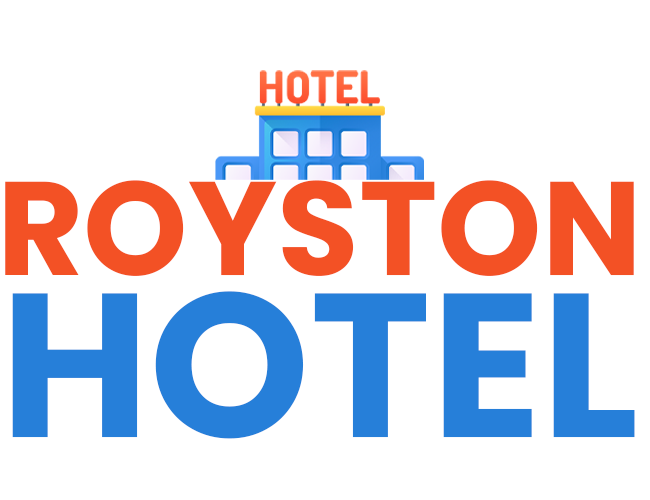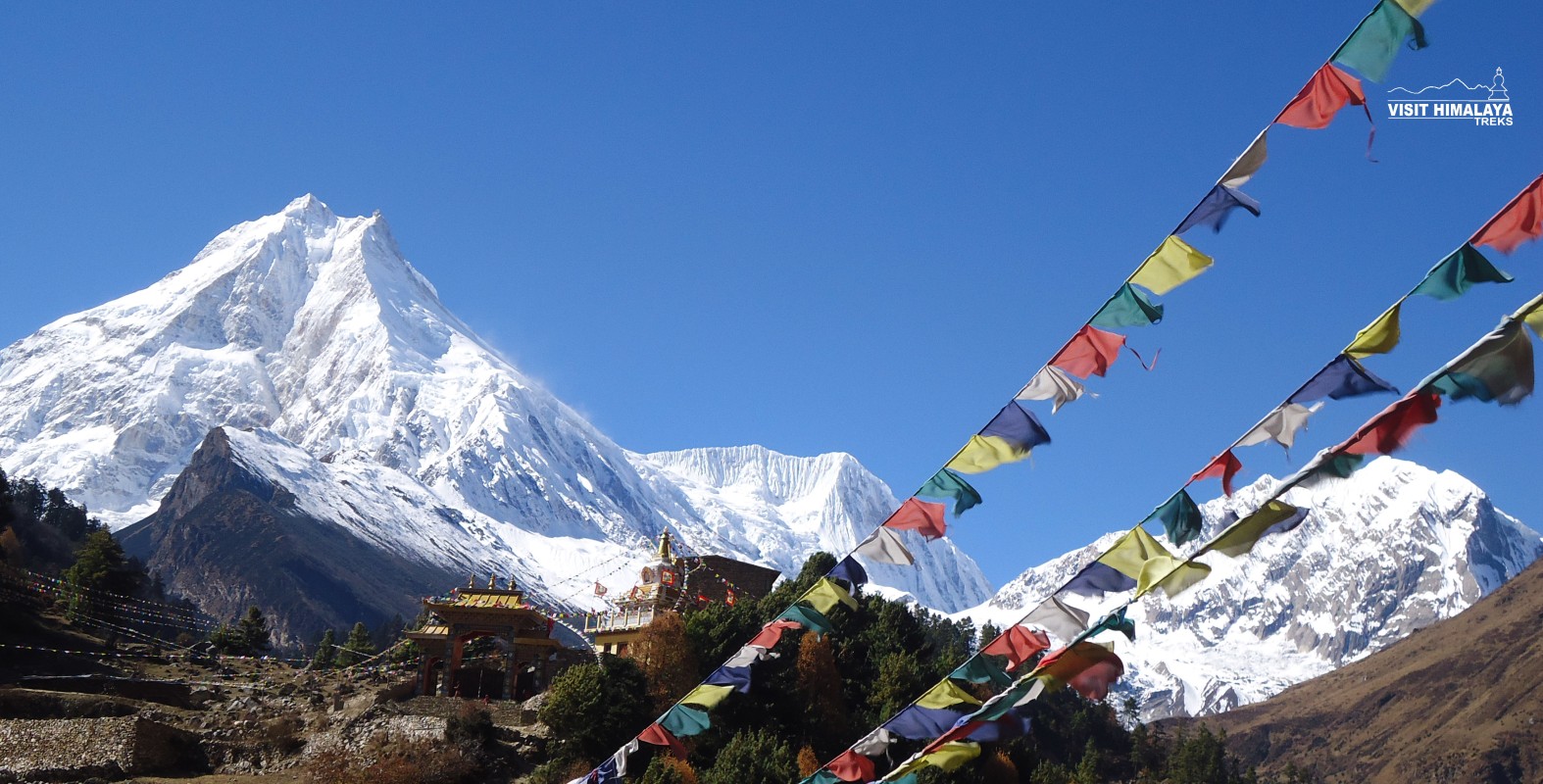If you’re looking for a remote, raw, and breathtaking trekking experience in Nepal that blends culture, adventure, and scenery without the Everest Base Camp crowds, then the Manaslu Circuit Trek is for you. Tucked in the shadow of the world’s eighth highest mountain__Mount Manaslu (8163 meters)__this off-the-beaten-path route offers an authentic Himalayan experience. From Tibetan Buddhist monasteries and ancient trade routes to alpine valleys and the dramatic crossing of the Larkya La Pass, the Manaslu Circuit is a high-altitude adventure that demands endurance, curiosity, and respect for tradition.
In this article, we take you deep into the heart of the Manaslu Circuit, its highlights, route details, permits, best seasons, cultural nuances, environmental concerns, and why it’s often called Nepal’s best-kept trekking secret.
Introduction to the Manaslu Region
The Manaslu region lies in north-central Nepal near the border with Tibet. The circuit encircles Mount Manaslu and falls within the Manaslu Conservation Area (established in 1998). Due to its proximity to the border and protected status, this trek requires a special permit and a licensed guide, making it less trafficked than the Annapurna or Everest trails.
The region is inhabited by the Nubri and Tsum people__ethnic groups closely tied to Tibetan culture. Their traditions, languages, and architecture differ greatly from lowland Nepal. You’ll pass through timeworn villages with main walls, prayer flags, yak caravans, and chortens that feel far removed from the 21st century.
Manaslu Circuit Trek at a Glance
- Duration: 14 to 20 days (standard trek 16 days)
- Max elevation:. 5,160 meters (Larkya La Pass)
- Trekking difficulty:. Challenging (due to high altitude and length)
- Best seasons.March–May (spring) and September–December (autumn)
- Starting point:. Barpak Village / Soti Khola or Machha Khola.
- Ending point:. Dharapani (connects to Annapurna Circuit)
- Permits required:. Manaslu Restricted Area Permit (MRAP), Manaslu Conservation Area Permit (MCAP), and Annapurna Conservation Area Permit (ACAP)
Route Overview and Major Highlights
The Manaslu Circuit Trek begins in the subtropical forests of Soti Khola and gradually climbs through river gorges, pine forests, and alpine pastures before cresting the Larkya La Pass and descending into the Marsyangdi Valley.
Here’s a day-by-day summary of the classic 16-day itinerary:.
Day 1–2:. Drive from Kathmandu to Barpak village / Soti Khola / Machha Khola
Begin the journey with a rugged jeep ride through hilly terrain and villages. The trail follows the Budhi Gandaki River through dense forest and narrow canyons.
Day 3–5:. Trek through Jagat, Deng, and Namrung
The cultural shift begins here as Hindu villages give way to Tibetan Buddhist settlements. You’ll see main walls, prayer wheels, and classic stone houses. Namrung offers your first close views of Ganesh Himal and Siringi Himal.
Day 6–7:. Lho and Sama Gaun
Lho boasts one of the most iconic viewpoints of Manaslu. Sama Gaun (3,530m) is a perfect place for acclimatization. Hike to Pungyen Gompa or Manaslu Base Camp (4,800m) for jaw-dropping views.
Day 8:. Rest and Acclimatization at Sama Gaun
Explore Birendra Tal (glacial lake), or hike to the Manaslu Base Camp. This extra day helps the body prepare for higher altitudes and ensures a safer ascent to Larkya La.
Day 9–10:. Samdo and Dharamsala
Samdo is a Tibetan refugee village near the Chinese border. The trail becomes more barren as you reach Dharamsala (also called Larkya Phedi), the last teahouse before the pass.
Day 11:. Cross Larkya La Pass (5,160m)
The toughest and most exhilarating day. You begin early, before sunrise. The summit of the Larkya La offers panoramic views of Himlung Himal, Cheo Himal, Kang Guru, and Annapurna II.
Day 12–14:. Descend to Bimthang, Tilije, and Dharapani
The descent brings dramatic shifts in scenery, from icy cliffs to lush pine forests. Eventually, the trail joins the Annapurna Circuit route.
Day 15–16:. Drive to Besisahar and continue to Kathmandu
A long but beautiful ride through terraced hillsides and rural towns brings you back to modern life.
What Makes the Manaslu Circuit Unique?
- Remote and Less Crowded
Unlike Everest or Annapurna, the Manaslu Circuit sees far fewer trekkers—around 10,000 a year versus Everest’s 50,000+., You can walk for hours without encountering another group. - Rich Tibetan Culture
The upper Manaslu region preserves an authentic Tibetan-Buddhist culture. Monasteries like Ribung Gompa- chortens, and festival rituals are integral parts of village life. - Diverse Ecosystems and Landscapes
You’ll pass through six climate zones__from subtropical jungles to arctic highlands. The trek features waterfalls, glacier-fed rivers, rhododendron forests, yak pastures, and Himalayan panoramas. - Manaslu Base Camp Hike
From Sama Gaun, trekkers can take a side trip to Manaslu Base Camp (4800m,). It’s a rewarding and less-visited alternative to the more commercial Everest Base Camp. - Larkya La Pass
Crossing Larkya La is the crowning achievement of the trek. Its elevation, exposure, and sheer scale make it one of Nepal’s most challenging and rewarding passes.
Permits and Regulations
Due to its location in a restricted area, you cannot trek the Manaslu Circuit independently. A minimum of two trekkers accompanied by a licensed guide is required. Here’s what you need:
- Manaslu Restricted Area Permit (MRAP):. ~$100 (Sept–Nov) or ~$75 (Dec–Aug) for the first 7 days; $15/$10 per day after that.
- Manaslu Conservation Area Permit (MCAP):. ~$30
- Annapurna Conservation Area Permit (ACAP):. ~$30
All permits must be arranged through a registered trekking agency.
Tips for a Successful Trek
- Train before your trip: Cardiovascular fitness, leg strength, and endurance are key. Consider hiking with a loaded backpack at altitude if possible.
- Acclimatize properly: Spend extra days at Sama Gaun or Samdo to reduce the risk of altitude sickness.
- Gear up: Pack layers, quality boots, trekking poles, and a warm sleeping bag. Nights can drop well below freezing at higher altitudes.
- Carry cash: There are no ATMs along the trail. Budget around $25–$35 per day.
- Stay flexible: Landslides, snow, or health issues can affect the schedule. A buffer day or two in your itinerary is wise.
- Respect local customs: Ask before photographing locals, walk clockwise around stupas, and learn some Nepali or Tibetan greetings.
Top Scenic Spots on the Trail
- Lho Village:. Dawn views of Mount Manaslu from the monastery
- Sama Gaun:. Surreal panoramas of snow peaks and glaciers
- Manaslu Base Camp:. Blue glaciers and a close encounter with the 8,000-meter giant
- Larkya La Pass:. A grand, windswept stage above the clouds
- Bimthang Valley:. Emerald meadows surrounded by silver peaks
Environmental and Cultural Sensitivity
The Manaslu region is ecologically fragile and culturally rich. Here’s how you can trek responsibly:
- Follow Leave No Trace principles
- Carry a refillable water bottle and water purification tablets
- Avoid buying bottled water or plastic snacks
- Choose local tea houses and support community-run lodges
- Don’t disturb wildlife or damage religious monuments
The Manaslu Conservation Area shelters rare species like the snow leopard, red panda, Himalayan tahr, and blue sheep. Your responsible behavior helps preserve this ecosystem.
Teahouse Trekking in Manaslu
While not as developed as Annapurna or Everest, the Manaslu trail has a growing number of cozy teahouses. Most offer basic twin-sharing rooms with shared toilets. Expect:
- Dal bhat (rice and lentils) is the staple meal
- Limited menu above 3,500m
- Solar-powered lighting and occasional charging ports (for a fee)
- Hot showers are available at select stops
Though rustic, the charm of these lodges lies in the warmth of the hosts and the chance to connect with fellow trekkers around a yak-dung stove.
Best Seasons
Best time to trek Manaslu Circuit :.
- Spring (March–May):. Rhododendron blooms, stable weather, and clear views.
- Autumn (Sept–Nov):. Crisp skies, vibrant festivals (like Dashain and Tihar), and ideal temperatures.
Avoid monsoon (June-August) due to landslides and leeches, and winter (Dec-Feb) unless you’re very experienced and prepared for snowbound passes.
Who Is This Trek Best For?
- Seasoned trekkers looking for a new challenge
- Photographers and nature lovers craving pristine scenery
- Cultural travelers interested in Himalayan Buddhism
- Adventurers seeking solitude without skipping on scenery
- Fit hikers ready to commit to a moderately strenuous route
Comparing Manaslu with Other Treks
| Feature | Manaslu Circuit | Everest Base Camp | Annapurna Circuit |
| Max Elevation | 5,160m (Larkya La) | 5,364m (EBC) | 5,416m (Thorong La) |
| Trek Duration | 14–18 days | 12–14 days | 16–21 days |
| Crowds | Low | High | Medium |
| Culture | Tibetan Buddhist | Sherpa Buddhist | Hindu + Tibetan mix |
| Permit | Restricted (guide required) | TIMS + Sagarmatha NP | ACAP + TIMS |
| Difficulty | High | Moderate–High | Moderate–High |
Final Thoughts: Is the Manaslu Circuit Trek Worth It?
Absolutely. If you’re after a remote Himalayan experience rich in nature, culture, and soul-stirring beauty, the Manaslu Circuit delivers all this and more. With fewer tourists and an authentic glimpse into Nepal’s mountain life, this trek is a rare gem in an increasingly commercialized trekking landscape., It demands more planning, permits, and perseverance in return, you’ll walk away with a sense of accomplishment few other treks can match. The Manaslu Circuit isn’t just a walk in the mountains,___it’s a passage through ancient worlds, living traditions, and the unfiltered grandeur of the Himalayas.
FAQs
Q1:. Do I need a guide for the Manaslu Circuit?
Yes. Due to its restricted status, a registered guide and at least one other trekker are mandatory.
Q2:. Is the Larkya La Pass difficult?
It’s physically demanding due to altitude and distance, but no technical climbing is required.
Q3:. How much does the trek cost?
Expect $1,200–$2,000 depending on group size, trekking company, services, and gear rental.
Q4:. Can I combine Manaslu with other treks?
Yes! Many trekkers extend into the Annapurna Circuit or explore the hidden Tsum Valley.
Q5:. Is there mobile or internet connectivity?
Limited to some areas (mainly below Sama Gaun). Don’t expect regular service above 3,500 meters.
Booking Process for Manaslu Circuit Trek with Visit Himalaya Treks
To book the Manaslu Circuit Trek through Visit Himalaya Treks, begin by contacting them via email or WhatsApp to discuss your preferred dates, group size, and specific needs. VHT will provide a detailed itinerary covering the duration of the Manaslu Larke Pass Trek, highlights, costs, and inclusions such as a guide, porter, meals, accommodation, and transportation.
We, Visit Himalaya Treks, will finalize all logistical arrangements, including transportation, accommodation, and permits, to ensure everything is in place for your trek. Upon arrival in Nepal, the team will ensure that all aspects of the trek are organized, providing you with a smooth and unforgettable experience on the trek to Manaslu Circuit, visiting the Base Camp of Mount Manaslu. Our company specializes in pure off-the-beaten-path destinations like the Kanchenjunga Base Camp Trek in eastern Nepal, one of the most beautiful treks in Nepal. Similarly mesmerizing Mount Makalu Base Camp Trek or any other Himalaya Trekking Tours in Nepal.

